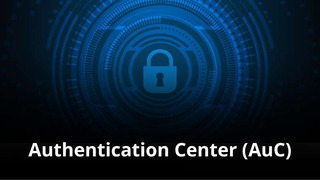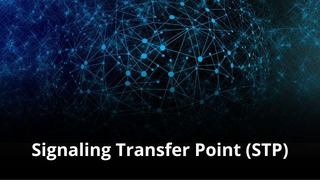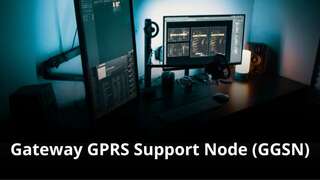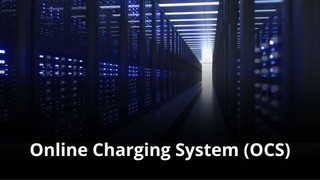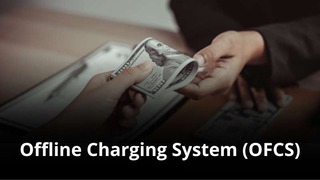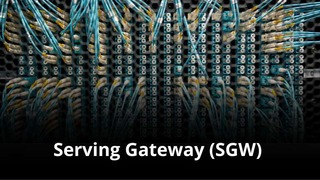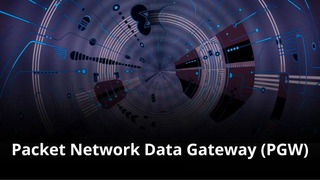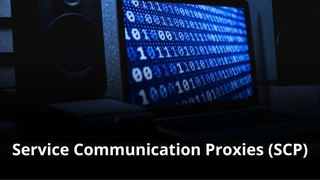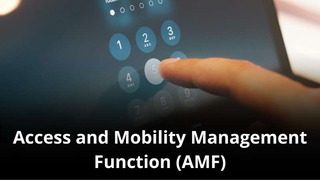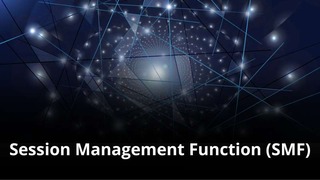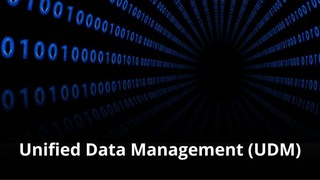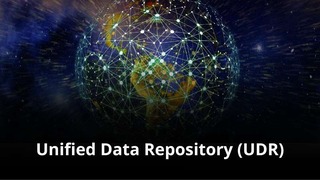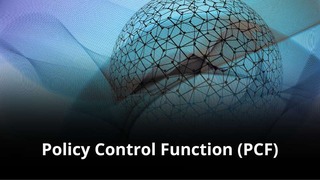Introduction about the Policy and Charging Rules Function (PCRF)
The Policy and Charging Rules Function (PCRF) is a critical functional element in 4G Long-Term Evolution (LTE) and 3G Evolved Packet Core (EPC) networks. It serves as the single, centralized decision point for all service policy control and real-time charging rule enforcement. Understanding the PCRF is essential for grasping how mobile operators manage the quality of service (QoS) and monetize data usage based on a subscriber’s service contract and current network conditions.What are the details of a Policy and Charging Rules Function (PCRF)?
- History and Evolution of the Policy and Charging Rules Function
- Core Utility and Functionality of the OCS
- Technical Integration and Data Model
- PCRF Ownership for MVNOs and IoT Companies
- Organizational Impact of PCRF Ownership?
- Redundancy and High Availability
- Future Trends and the PCRF
- Frequently Asked Questions about the PCRF
- Summary
History and Evolution of the Policy and Charging Rules Function (PCRF)
The Policy and Charging Rules Function (PCRF) was introduced to bring intelligent, dynamic control to mobile broadband services. Before the PCRF, network traffic and charging were often managed statically by individual network elements. With the rise of the smartphone and complex tiered data plans (e.g., unlimited social media, speed throttling after a cap), operators needed a single brain to execute these rules in real-time. The PCRF was standardized by 3GPP (3rd Generation Partnership Project) to centralize this control. In the transition to 5G, its functions were split and evolved into the Policy Control Function (PCF) and the Charging Function (CHF), adhering to the new service-based architecture (SBA).
Core Utility and Functionality of the PCRF
What is the PCRF Used For?
The Policy and Charging Rules Function (PCRF) is used to define and enforce all business-level policies on a per-subscriber, per-session, and per-service basis. Its primary purpose is to ensure that a mobile operator’s business rules and promises (e.g., “premium video streaming at 10 Mbps”) are accurately translated into technical enforcement actions within the network (e.g., setting the correct QoS parameters). Implementing a PCRF is mandatory for offering sophisticated service bundles, managing network congestion, and providing precise real-time charging control.
Key Functions of the Policy and Charging Rules Function (PCRF)
Lets investigate the core functions of the Policy and Charging Rules Function (PCRF) to understand its centralized role:
-
Traffic Steering/Gating: It can instruct the network to allow, block, or redirect certain traffic flows based on the policy (e.g., redirecting all video traffic to a traffic optimization server).
-
Subscriber and Service Data Aggregation: It gathers information about the subscriber (from the Subscription Profile Repository – SPR), the service being used, and the network state to formulate the correct rule.
-
QoS Enforcement Control: It instructs the Policy and Charging Enforcement Function (PCEF) (which is integrated within the PGW) on the specific QoS class and maximum bit rate to apply to the user’s traffic.
-
Usage Monitoring and Thresholding: It tracks usage data and notifies the charging system or the user when a usage limit or promotional cap has been reached.
-
Policy Decision Point: It creates, updates, and deletes Policy and Charging Control (PCC) rules for every active user session.
- Sponsor/Third-Party Data Management: It supports policies for sponsored data where a third party (like an application provider) pays for the subscriber’s data usage.
Technical Integration and Data Model
The Policy and Charging Rules Function (PCRF) sits logically between the business/charging domains and the data enforcement domains. Examine its key integration points:
- PCEF (Policy and Charging Enforcement Function): This function is primarily located in the Packet Data Network Gateway (PGW). The PCRF communicates with the PCEF via the Gx interface (using the Diameter protocol) to push, update, and remove PCC rules.
- OCS/OFCS (Online/Offline Charging Systems): The PCRF uses the Gy/Gz interfaces (Diameter) to synchronize policy decisions with real-time credit checks and billing activities.
- SPR (Subscription Profile Repository): The PCRF retrieves the subscriber’s contract and subscribed service entitlements from the SPR via the Sp interface (Diameter) to ensure policies align with the user’s plan.
- Application Functions (AF): It can receive real-time session information (like a request for a high-quality video stream) from application servers via the Rx interface (Diameter).

Technical Data Model and Key Interfaces
The PCRF maintains a complex Technical Data Model built around Policy and Charging Control (PCC) Rules. This model is highly dynamic, containing the active state of every user session, the applicable policy rules, and the current enforcement parameters. It must be transactionally secure to ensure a user’s service contract is always enforced correctly, which involves correlating data from the SPR, the network, and the charging systems.
PCRF Ownership for MVNOs and IoT Companies
Why Own a PCRF?
For a Mobile Virtual Network Operator (MVNO) or an IoT company, owning a dedicated Policy and Charging Rules Function (PCRF) is the ultimate lever for service differentiation and monetization. Consider that the PCRF is the brain that determines what a user is allowed to do and how their traffic is treated. Owning it allows these companies to design and launch innovative, niche-focused policies instantly, such as “low-priority bulk sensor data” versus “ultra-low-latency autonomous vehicle control data,” giving them a powerful competitive advantage.
Advantages and Disadvantages of PCRF Ownership
Monetization Flexibility: Rapidly launch complex, tiered, or sponsored data plans.
QoS Control: Guarantee specific speeds and latency for premium or critical services.
Superior Customer Experience through real-time notifications and balance visibility.
Traffic Prioritization: Manage network congestion by prioritizing mission-critical traffic (e.g., emergency services, specific IoT devices).
Customized User Experience: Delivering real-time service updates and throttling/boosting speeds dynamically.
Extreme Complexity: Requires deep expertise in Diameter, policy logic, and networking.
Significant Operational Overhead requiring 24/7 financial and technical oversight.
High Latency Risk: The centralization of the PCRF can introduce latency if not geographically distributed effectively.
Integration Reliance: Must flawlessly integrate with the host MNO’s network elements (PGW/SGW) or the MVNO’s own PGW.
Heavy Signaling Load: Must handle massive volumes of Diameter signaling messages for all session updates.
Organizational Impact of PCRF Ownership
Analyzing the organizational impact of owning a Policy and Charging Rules Function (PCRF) across various business units.
Operational Impact: Requires the establishment of a Policy Operations team focused solely on managing rule creation, testing, and deployment. Any error in a PCC rule can immediately impact revenue or cause widespread network service issues. Adopt a strict, automated governance process for rule changes.
Financial Impact: Evaluate the high capital expenditure (CapEx) for the platform itself and the long-term operational expense (OpEx) for specialized licensing and vendor support. The financial return is realized through increased pricing power and reduction in revenue leakage.
Commercial Impact: Leverage the PCRF’s power to enable sophisticated marketing campaigns. For instance, offering a free 24-hour speed boost or a targeted “unlimited video” pass for high-value customers, all controlled instantly by policy.
Technical Impact: Mandates a robust, highly resilient Diameter signaling network architecture. The platform must be able to process millions of transactions per second under peak load without failure.
Redundancy and High Availability

The Policy and Charging Rules Function (PCRF) is a single point of failure for all data services; therefore, Redundancy and High Availability (HA) are absolutely paramount. Implement a fully redundant, geographically separated cluster with N+N redundancy. The system must support session synchronization to ensure that in the event of a failure, the standby PCRF can immediately take over active sessions without having to re-establish the connection or lose the policy context. Ensure rigorous, continuous performance testing to validate its ability to sustain peak signaling loads and instantaneous failover.
Impact of 5G and 6G on the PCRF
PCRF’s Transition to 5G
In the 5G Core (5GC), the functions of the PCRF are succeeded by the Policy Control Function (PCF). The PCF is a cloud-native function (CNF) and operates within the Service-Based Architecture (SBA). It uses the Service-Based Interface (SBI), a HTTP/2-based interface, instead of the Diameter protocol. The PCF remains the decision-making brain, but it is architected for greater elasticity and distribution, fully embracing virtualization.
6G’s Vision
As 6G technology emerges, Anticipate that the successor to the PCRF (the PCF) will become an AI-Native Policy Function. This next-generation system will use Artificial Intelligence (AI) and Machine Learning (ML) to make policy decisions autonomously and in real-time. For instance, it could dynamically adjust a user’s QoS based on predictive traffic patterns, instantaneous user location, and the specific latency requirements of a future holographic application, all without human intervention. The core function of centralized policy control will become more intelligent and context-aware.
Frequently Asked Questions about the Policy and Charging Rules Function (PCRF)
1. What is the core function of the PCRF?
The core function of the PCRF is to be the centralized brain for policy control. It determines the rules (e.g., QoS, speed, charging) for every active user session based on the subscriber’s contract and network status, and then sends those rules to the enforcement point.
2. What is the difference between the PCRF and the OCS?
The PCRF is responsible for policy (what the user is allowed to do). The OCS (Online Charging System) is responsible for credit control (checking if the user has enough money to do it). They work together: the PCRF asks the OCS if credit exists before enforcing a service policy.
3. What network element is the enforcement point for the PCRF's rules?
The primary enforcement point in 4G is the PCEF (Policy and Charging Enforcement Function), which is typically co-located with the Packet Data Network Gateway (PGW). The PCRF pushes the rules to the PGW/PCEF via the Gx interface.
4. What protocol does the PCRF primarily use for signaling?
The PCRF primarily uses the Diameter protocol for signaling over its key interfaces, such as Gx (to the PGW) and Rx (to application servers).
5. How does the PCRF help manage network congestion?
The PCRF uses Call Admission Control (CAC) logic. When it detects that a certain cell or network area is congested, it can instantly apply a policy rule to degrade the QoS or throttle the speed for low-priority traffic, thereby reserving capacity for high-priority or premium services.
Summary
The Policy and Charging Rules Function (PCRF) is the intelligent, centralized control point for all mobile data services in 4G networks, dictating how a subscriber’s service contract is enforced. Owning a PCRF provides MVNOs and IoT companies with unparalleled strategic control over policy, QoS, and monetization, enabling sophisticated and differentiated service offerings. This control, however, necessitates a major investment in high-availability infrastructure and specialized Diameter signaling expertise. Its functions endure in the Policy Control Function (PCF) of the 5G core and are set to become AI-driven in the 6G era.
